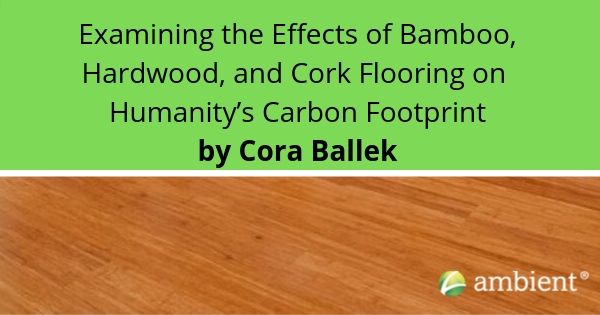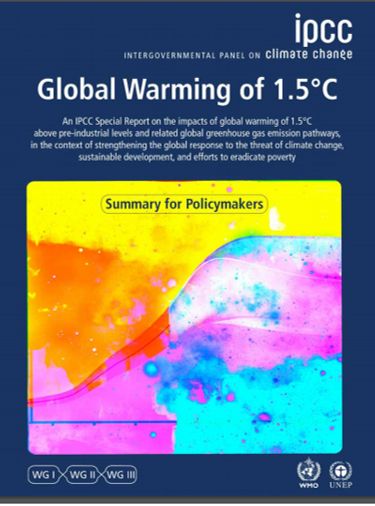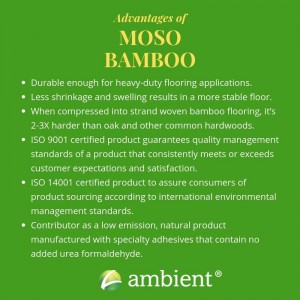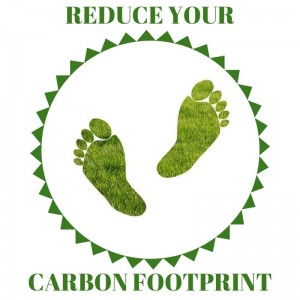Ambient is proud to present this guest post by Cora Ballek, with the Greener Living Blog Editorial Team’s additions. Cora is the winner of the 2019 Ambient Bamboo Floors Essay Contest Scholarship. Cora is an undergraduate student at the University of California, Davis.
On October 8th, 2018, the Intergovernmental Panel on Climate Change published a report spelling out worldwide disaster if global emissions are not significantly curtailed by 2030. With global temperatures continuing to rise and greenhouse gasses continuing to accumulate in our atmosphere, reducing humanity’s carbon footprint has become more important than ever. Though this responsibility falls largely on national governments and corporations, even average consumers now feel obligated to use their purchasing power to combat pollution and global warming. Products that are eco-friendly, organic, reusable, recyclable, renewable, sustainable, or in any way “green” continue to gain popularity, and producers have picked up on this: In many industries, companies now attempt to outdo each other in offering the “greenest” possible product. In few industries is this competition more prominent than in the building products industry. Between manufacturers, environmental review sites, and home improvement blogs, countless sources offer environmentally concerned homeowners important advice concerning one material’s environmental friendliness.
What flooring is the most eco-friendly?
When talking about flooring, many advocates for hardwood, cork, linoleum, ceramic tiles, stone, eco-friendly carpet, even glass tiles – and, of course, for the king of them all: bamboo. Close behind are cork and hardwood. To find the most eco-friendly, begin with a close look at bamboo flooring.
Examining the environmental impacts of bamboo flooring
Due partly to its insanely rapid growth rate, bamboo is often considered one of the most sustainable materials in existence. When first learning about it, it’s easy to see why. Taxonomically, bamboo is a grass, rejuvenating itself regularly from an underground rhizome stock. As such, it can be harvested bi-annually or even annually once the plant has reached maturity.
Notable Bamboo Properties:
- Under good conditions, a bamboo plant will reach maturity in five to seven years.
- The fastest-growing bamboos may grow up to 3.5 feet in a single day.
- When well-managed, bamboo requires neither pesticides nor fertilizers, preventing harmful runoff into rivers and lakes.
These properties make bamboo an ideal material when it comes to reducing humanity’s ecological footprint. However, determining the raw material’s sustainability is only the first step when evaluating any flooring for its contribution to the race to shrink our carbon footprint.
The video below shares more about building an environmentally friendly home with bamboo flooring and other sustainable materials.
Is bamboo flooring the most eco-friendly? Find out in this comparison with cork and hardwood flooring.
To find whether bamboo flooring truly helps decrease humanity’s carbon footprint – and whether it does so better than other materials – it must be compared to its two main carbon-consuming competitors, hardwood and cork, along every stage of its production process.
When it comes to flooring, bamboo, hardwood, and cork are the best bets for addressing our carbon footprint for one simple reason: All three materials act as carbon sinks. Grown in large quantities on plantations, bamboo, hardwood trees, and cork oaks alike all absorb large amounts of CO2 from the air through photosynthesis and trap the carbon component within their biomass for extended periods of time to grow to their respective sizes.
The same cannot be said for ceramic tile, stone, or carpet. Though produced using organic matter, Linoleum cannot act as a carbon sink since its primary ingredient, linseed oil, comes from flax, a much smaller stature plant. To decisively determine which of these three main contenders stores carbon most effectively is somewhat difficult. Findings from different reports often differ in terms of precise values.
However, when observing these findings holistically, a general trend emerges. According to a report by the International Network for Bamboo and Rattan (INBAR), the carbon sequestering capabilities of Moso bamboo – the most common bamboo used in bamboo flooring and usually harvested at 5 years of age – measure up to those of a Chinese Fir, a fast-maturing tree that is generally harvested 30 years after planting, when compared over a time period of 60 years with two rotations of Firs.
A 2008 article published by Slate, by contrast, cites an estimate made by the World Wildlife Fund that “an acre of bamboo can store 6.88 metric tons of carbon per year, about 70 percent more than an acre of hardwoods”. To validate such a claim, some math is required: Given that a hardwood tree can absorb up to 48 pounds of CO2 in a year, which is equivalent to 21.77 kg, and given that a tree plantation with trees seeded 8 feet by 8 feet apart – a common layout – will contain about 680 trees per acre, this would mean that such a tree plantation could absorb around 14.8 metric tons of carbon dioxide in a year. But since carbon itself only makes up 27.3 percent of the weight of carbon dioxide, the amount of carbon absorbed by a tree plantation seeded 8×8 feet in a year is about 4.04 metric tons a year, exactly in line with the previous statistic.

Further evidence can be found in the oft-touted fact that an acre of bamboo produces 35% more oxygen than an acre of hardwood. Though our atmosphere’s oxygen levels play no role in the climate crisis we currently face, a high oxygen production rate also indicates a high rate of photosynthesis, which indicates a high rate of CO2 absorption. Through all of this, it can be concluded that bamboo is, at worst, equivalent to the average hardwood tree in terms of its carbon-sequestering capabilities and significantly superior at best.
Comparing bamboo to a cork, a similar conclusion can be reached. Amorim states a 2010 article from the cork company: “a well-managed cork oak forest can sequester 14.7 tons of CO2 per hectare and per year”. However, Moso bamboo can store 250 tons of carbon in one hectare, according to a 2013 Ecology Global Network article by Tracy Li. Even with the high-end estimate that bamboo’s hectare in question took seven years to mature, this still equates to 35.7 tons of carbon per hectare per year, a statistic twice as high as the one for cork oaks. Based on these statistics, it is safe to say that bamboo, hardwood, and cork bamboo sequesters carbon most efficiently, establishing itself as the most effective carbon sink of the three.
Which flooring is most eco-friendly? The way flooring is processed and transported also impacts the environment.
Carbon sequestration is not the sole contributor to the carbon footprint of these materials, however. The term “carbon footprint” describes the full climate impact of a given object or entity. For a product, this includes the raw materials used and the processing and transportation of the product. Therefore, the processing methods of bamboo, hardwood, and cork flooring and the distance and means of transportation must also be analyzed.
A quantitative comparison of the environmental impacts of processing methods used in these industries is virtually impossible. Emissions caused in this area mostly occur indirectly through the consumption of electricity produced by burning fossil fuels. How much of the electricity consumed was produced in this manner may vary widely based on the five locations at which processing occurs. Therefore, the only way to evaluate this front is to generalize that higher energy consumption equates to greater emissions. Furthermore, the amount of energy required for processing will vary by the factory, and a lack of available data means that even ballpark estimates are impossible.
Judgments about energy consumption during processing for flooring production can only be qualitative, therefore. Nevertheless, a basic comparison between the energy required to process bamboo, hardwood, and cork can and should be made. According to Chris Magwood, writing for Mother Earth News, “processing raw bamboo into flooring involves kiln drying, boiling (sometimes twice) and often steaming” in addition to cutting, gluing, and sealing. He continues that “given the need for two to four high-heat processes, the production of bamboo flooring likely uses more energy than that of wood floors.”
Though different hardwood flooring types require different processing amounts, with solid hardwood requiring less than engineered hardwood, neither type appears to require as much energy as bamboo. The only steps required for solid hardwood floors are cutting and sealing, while engineered hardwood includes the extra step of gluing.
Meanwhile, Cork must be “ground up, compressed, and formed into sheets bonded with resins” to produce flooring, explains Joseph Lewitin in an article for The Spruce. Though certainly more energy-intensive than manufacturing solid hardwood floors, this process is likely also less energy-intensive than bamboo flooring production. The environmental impacts of transportation must similarly be judged qualitatively.
Most bamboo flooring is exported from China, as explained on Ambient’s own website, Bamboo 6 Floor F.A.Q. – About Our Products and corroborated by an article on Home Stratosphere 11 Different Kinds of Flooring Explained (Definitive Guide). This means that bamboo flooring is transported to customers outside of China largely via cargo ships. The implications of this fact are often debated: While some argue that cargo ships are efficient due to their massive capacities, it is also established that they are major polluters, with the maritime shipping industry emitting three percent of the world’s CO2, the same portion as Germany.
Meanwhile, Cork flooring is produced around the Mediterranean in the native habitat of the cork oak, in Spain, southern France, Algeria, Tunisia, Morocco, and most notably Portugal. It faces the same issue as bamboo: the product must be transported to customers elsewhere by cargo ship.
Hardwood flooring, by contrast, is produced in many different parts of the world. If purchased responsibly, this means smaller traveling distances for the product, and you would think thus a smaller carbon footprint.
However, there are two problems here:
1) Purchasing hardwood produced in a local area may prove difficult for consumers: as Jamie Sturgeon explains in an article for Global News, “experts in the hardwood flooring retail business suggest as much as three-quarters of all hardwood flooring sold [in Canada] through big-box renovation chains and other direct-to-public retailers now hails from Chinese producers.”
2) Most hardwood flooring is transported via freight truck from isolated inland forest to large metro areas (and the distances aren’t always so short). While freight trucks may travel shorter distances than their ocean-going container steamship counterparts, they also emit much more CO2 per cubic meter of transported material. So it’s a bit of a trade-off.
There are many examples of limitations to sourcing real hardwood locally, such as US-based company Real Wood Floors, which export untreated hardwood to China for processing and then re-imports it to sell to US consumers. Emissions due to long-distance travel are avoidable by buying from flooring companies that source their wood locally (if you can find such a supplier) and often control their entire production chain to reduce travel distances and save on production costs.
In terms of emissions due to transportation, this places hardwood flooring in a favorable position compared to bamboo and cork flooring for consumers in about half of the world, but only when the hardwood floor can truly be sourced locally. However, for consumers in Southeast Asia, bamboo flooring would entail the lowest transport emissions, and for consumers around the Mediterranean and in Europe, this distinction goes to cork flooring.
However, it should be noted that while cork production will remain limited to the Mediterranean for the foreseeable future due to the specific environment in which cork oaks require to grow, this is not the case for bamboo production. In fact, 20 African countries have already joined INBAR, which Zipporah Musau, who writes for Africa Renewal, says, “INBAR is assisting them with bamboo information, technology transfer, capacity building, and policy formulation.”
Meanwhile, in the US, bamboo farming is already underway in Alabama and other southern states. The CEO of Resource Fiber, David Knight, believes that bamboo farming in the US can become a billion-dollar industry.
A final comparison between bamboo, hardwood, and cork flooring.
There is a final comparison to be made between bamboo, hardwood, and cork flooring: the duration over which their respective carbon contents remain sequestered. Once installed in a home, bamboo floors retain their carbon content for approximately 80-100 years, while hardwood floors retain their carbon content for approximately the same period. It is unclear how long cork floors store carbon once installed – there appears to be no research on this front. However, it should be noted that cork contains a particularly high amount of suberin. A substance found in plant cell walls that plant biologist Joanne Chory has proposed could be used to augment other plants such as legumes retain carbon for longer. Also, because cork oaks are not harmed during the harvesting process, they live for up to 200 years, thus retaining carbon far longer than felled bamboo or felled hardwood.
Though the numbers indicate that bamboo may be slightly outclassed by hardwood and cork in terms of its long-term carbon retention, other factors must also be examined. Strand woven bamboo floors, being far more durable than most hardwood floors, require refinishing only every 30-40 years, while hardwood floors require it every 10-20 years.
As most floor coatings are harmful to both the human body and the environment, bamboo flooring allows consumers to avoid introducing additional pollutants into the air via frequent refinishing, balancing out its inferior long-term carbon retention capabilities.
When comparing the effects of bamboo, hardwood, and cork flooring on humanity’s carbon footprint, bamboo flooring has some disadvantages. Its production process consumes more energy than that of both hardwood and cork flooring. Its centralized production adds more emissions to its carbon footprint farther from China it is purchased.
The question at hand cannot be viewed in a vacuum. It must be placed in the context of current events and projections. And with eleven years left for humanity to decrease its greenhouse gas emissions by 45% – as described by the Intergovernmental Panel on Climate Change’s report – it is bamboo’s superior carbon sequestering capacity that takes precedence above anything else. Bamboo sequesters up to 70% more carbon per acre and year than the average hardwood tree can, and over twice as much carbon per hectare per year as cork oaks. This alone more than compensates for the disadvantages which bamboo flooring may suffer in later stages of its production and distribution, but additional steps can be taken to reduce the carbon footprint of bamboo flooring even further: Bamboo flooring companies might invest in renewable energy sources to offset the emissions from higher energy usage or market their products more heavily consumers in southeast Asia to minimize emissions from transportation.
Additionally, bamboo culms are harvested every 5 years, and the root systems are left intact, which prevents soil erosion and runoff. Compared to the 40-80 years, it takes hardwoods to regrow, and there is simply no comparison. Humanity’s carbon footprint must be decreased significantly and rapidly to contain the damage of global warming and among flooring materials, which makes bamboo king among eco-friendly materials.
How does bamboo help the environment?
The information above examines the environmental impact of bamboo, cork, and hardwood flooring. Bamboo also helps the environment. It is used as a building material for many other uses than flooring, as a component in several sustainable products, and as a green solution for the environment.
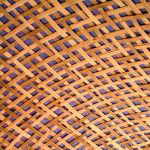
As a building material, bamboo has many advantages, including tensile strength, fire resistance, elasticity, and lightweight. Below are a few ways bamboo is used as a building material:
- Construction of scaffolding, bridges, structures, and houses
- Structural frames
- Floor, wall, and roof construction
- Foundation construction
- Fencing and other land and lawn design
Bamboo is also used in the construction of other sustainable household products.
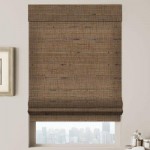
- Food
- Clothing
- Cutting boards
- Bicycles
- Blinds
- Bedsheets
- Paintbrushes
- Matting
- Instruments
As an environmental green solution, using bamboo helps our environment in a myriad of ways.
- Provides soil protection, structuring, and reinforcement
- Reduces rain runoff and soil erosion
- It helps remove toxins such as heavy metal pollution in soils.
- An efficient plant for “Phytoremediation” – phosphates from factories and excess nitrates from livestock are eagerly slurped up by bamboo, which can, in turn, be harvested for other uses.
If you are interested in learning more about Bamboo flooring’s benefits and its effect on the environment, read Eco-friendly Bamboo Flooring: Gorgeous floors good for the earth.

About the Author
Meet Jo Lynn! 🌿🧹 With more than a decade of eco-cleanliness expertise under her belt, Jo Lynn is on a mission to turn spaces into healthier, greener sanctuaries. Her journey into sustainable home maintenance started with a deep love for the environment and a determination to whip up non-toxic solutions that actually work.
Whether it’s a cozy home or a bustling office, Jo Lynn knows how to keep spaces spotless without compromising your health or our planet’s well-being. Plus, rumor has it, her cleaning jokes are so good, even the dust bunnies can’t help but chuckle! 😄

